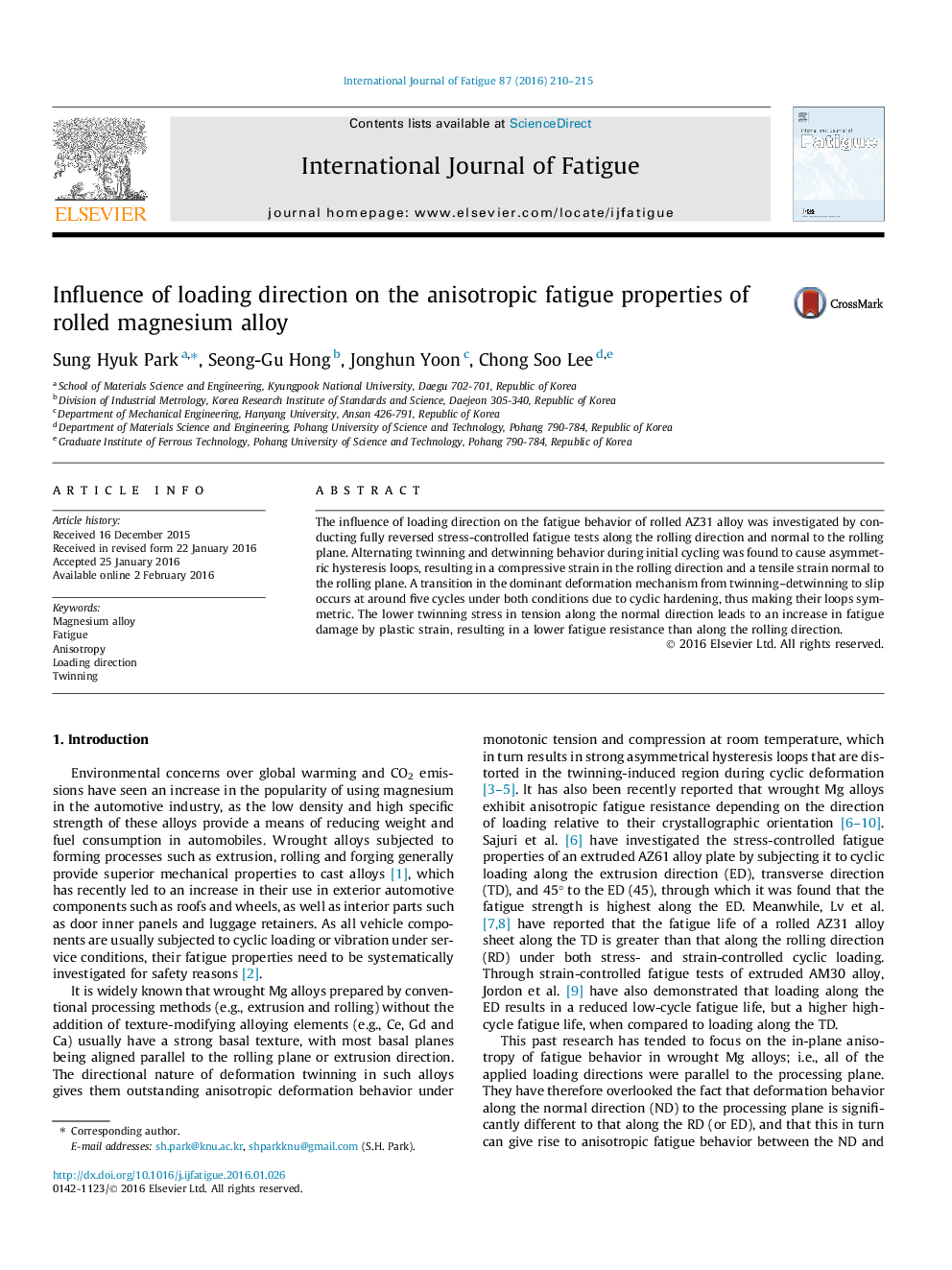| Article ID | Journal | Published Year | Pages | File Type |
|---|---|---|---|---|
| 778088 | International Journal of Fatigue | 2016 | 6 Pages |
•Stress-controlled fatigue properties of rolled AZ31 alloy were investigated.•Tests were conducted along the rolling direction and normal direction.•A transition in the dominant deformation mechanism occurs at ∼5 cycles.•Fatigue resistance is greater along the rolling direction.•Lower twinning stress along the normal direction leads to greater fatigue damage.
The influence of loading direction on the fatigue behavior of rolled AZ31 alloy was investigated by conducting fully reversed stress-controlled fatigue tests along the rolling direction and normal to the rolling plane. Alternating twinning and detwinning behavior during initial cycling was found to cause asymmetric hysteresis loops, resulting in a compressive strain in the rolling direction and a tensile strain normal to the rolling plane. A transition in the dominant deformation mechanism from twinning–detwinning to slip occurs at around five cycles under both conditions due to cyclic hardening, thus making their loops symmetric. The lower twinning stress in tension along the normal direction leads to an increase in fatigue damage by plastic strain, resulting in a lower fatigue resistance than along the rolling direction.
Graphical abstractFigure optionsDownload full-size imageDownload as PowerPoint slide
